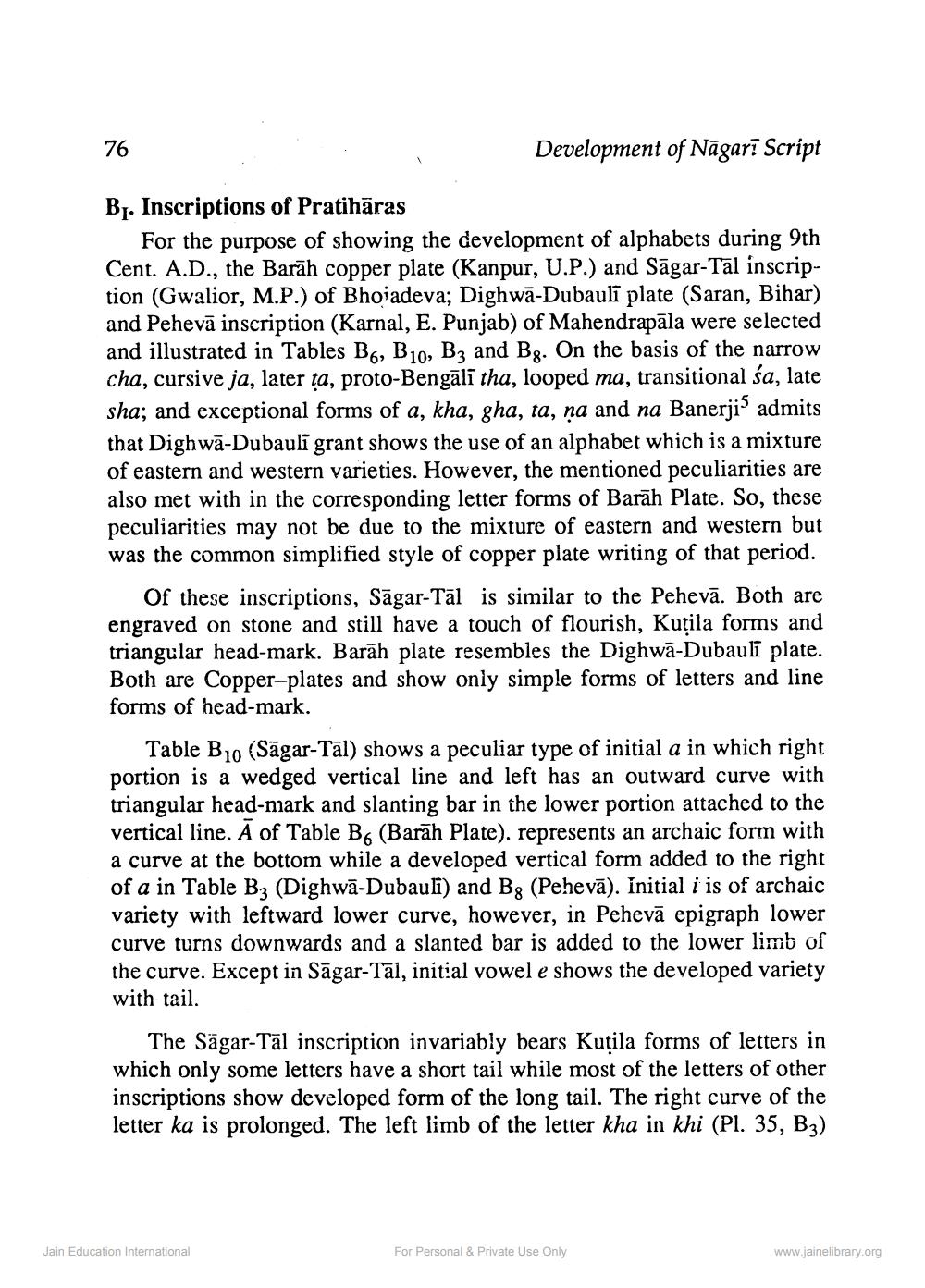________________
76
Development of Nagari Script
Br. Inscriptions of Pratihāras
For the purpose of showing the development of alphabets during 9th Cent. A.D., the Barah copper plate (Kanpur, U.P.) and Sagar-Tal inscription (Gwalior, M.P.) of Bhojadeva; Dighwā-Dubaulī plate (Saran, Bihar) and Pehevä inscription (Karnal, E. Punjab) of Mahendrapala were selected and illustrated in Tables B6, B10, B3 and Bg. On the basis of the narrow cha, cursive ja, later ta, proto-Bengali tha, looped ma, transitional sa, late sha; and exceptional forms of a, kha, gha, ta, na and na Banerji" admits that Dighwa-Dubauli grant shows the use of an alphabet which is a mixture of eastern and western varieties. However, the mentioned peculiarities are also met with in the corresponding letter forms of Barah Plate. So, these peculiarities may not be due to the mixture of eastern and western but was the common simplified style of copper plate writing of that period.
Of these inscriptions, Sagar-Tal is similar to the Peheva. Both are engraved on stone and still have a touch of flourish, Kutila forms and triangular head-mark. Barah plate resembles the Dighwa-Dubaulī plate. Both are Copper-plates and show only simple forms of letters and line forms of head-mark.
Table B10 (Sagar-Tal) shows a peculiar type of initial a in which right portion is a wedged vertical line and left has an outward curve with triangular head-mark and slanting bar in the lower portion attached to the vertical line. A of Table B6 (Barah Plate). represents an archaic form with a curve at the bottom while a developed vertical form added to the right of a in Table B3 (Dighwa-Dubauli) and Bg (Peheva). Initial i is of archaic variety with leftward lower curve, however, in Pehevä epigraph lower curve turns downwards and a slanted bar is added to the lower limb of the curve. Except in Sagar-Tal, initial vowel e shows the developed variety with tail.
The Sägar-Tal inscription invariably bears Kutila forms of letters in which only some letters have a short tail while most of the letters of other inscriptions show developed form of the long tail. The right curve of the letter ka is prolonged. The left limb of the letter kha in khi (Pl. 35, B3)
Jain Education International
For Personal & Private Use Only
www.jainelibrary.org




